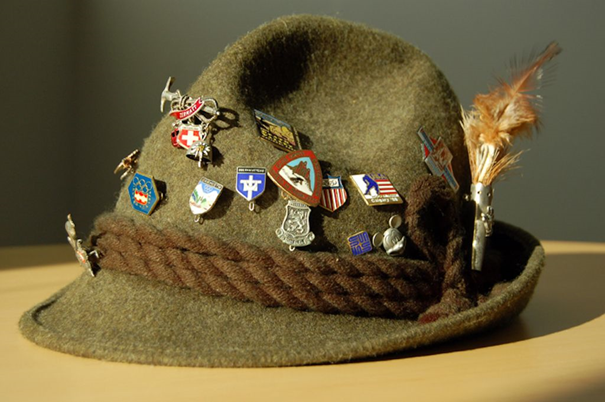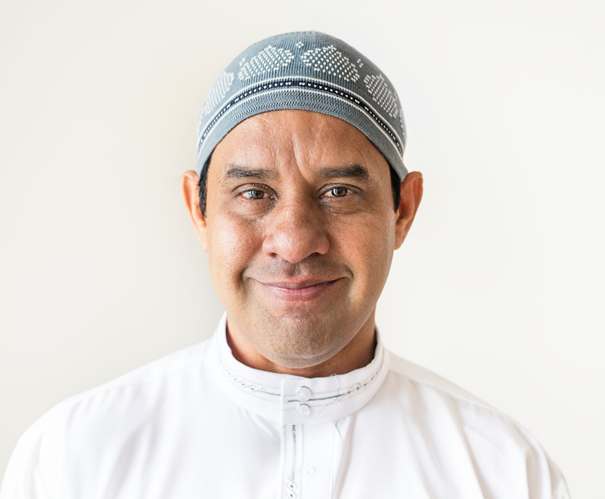There are many different clothing styles among people and a clothing style says a lot about someone. You can also deduce a lot from a clothing style, for example where someone comes from. You can see this especially well in a traditional way of dressing. Traditional way of dressing also includes hats. Over the years, these hats have become a symbol of different countries, regions or religions. In the past, a lot of different headwear has been worn. Traditional headwear comes in all shapes and sizes, such as warm hats, military helmets and fashion statements. This article lists several headwear that symbolize a country, area or religion, so you know which headwear symbolizes your next vacation destination.
{{cta('655a9b4d-dfcf-4b3b-b974-a48caf9f5afb','justifycenter')}}
1. The sombrero – Mexico

Besides tequila and tacos, the sombrero is also top of mind when you think of Mexico. When you go on a trip to Mexico you will certainly encounter the aforementioned traditional stuff. Some hats have a purely visual value. Others, like the sombrero, have more practical use. The sombrero is a type of hat native to Latin America, especially Mexico. Typically sombreros, like cowboy hats, are made of straw and felt. Mexico’s signature wide-brimmed hat is designed to protect wearers from the sun, and got its name from the Spanish word for ‘shade’ or ‘shade’. Although the exact origin of the hat is unknown, it has historically been associated with a person’s socio-economic status. Wider borders, decorative elements, and more expensive materials such as felt as opposed to straw were all indicators of wealth.
2. The fez – Balkans

The fez is a hat that mainly originates in the Balkans, Morocco and Turkey. The fez is still worn here today, especially by traditional people. The hat has also been worn in the military. The hat mainly has to do with appearance, it has no further underlying idea.
The fez is also called a Turkish hood in in some countries. In the French language, the term first occurs in 1664. It was originally made of morocco, a fine type of red-colored goatskin, and later mainly of felt. The shape is a slightly tapered cylinder with a tassel on top.
In the 19th century, in Turkey and Greece in particular, this headwear was worn by a great masse, by both men and women. In 1826, the fez was made compulsory by Sultan Mahmut the Second for Turkish officials and military personnel. Although the Imams were initially against it, the headgear was accepted as a symbol of the Ottoman Empire, both culturally and religiously.
3. The cowboy hat – America

A cowboy hat is a hat made of a lightweight material, such as felt, with a high crown and a wide brim, designed to protect the wearer from the weather conditions of the American West. It is a recognizable part of the typical costume of the North American cowboys of the 19th century. Even today, many people, especially in the west and south of the US, the west of Canada and the north of Mexico, wear cowboy hats; especially people who work on a ranch or are otherwise involved in the stereotypical Wild West, such as country singers, rode stars or actors in westerns.
4. The beret – France

Although forms of this hat already existed early in the Bronze Age, the hat was mass produced in the 19th century. Especially in France and Spain the hat became very popular. The black beret was once considered the national cap of France and is part of the stereotypical image of the Onion Johnny. It is no longer worn as widely as it once was, but it remains a strong sign of local identity in southwestern France. When French want to introduce themselves as “the typical average Frenchman” in France or abroad, they often use this Anglo-Saxon stereotype.
5. Top Hat – England

The top is a hat that was mainly worn by the upper classes in the early 19th century. They were made popular in the late 18th century by the dandies who in the beginning with their unusual attire brawled and even ran the risk of arrest.
In general, top hats are black in color, but there are also other colors of top hats. The top hat is becoming ordinary as well as high side. There are collapsible versions of the top hat, chapeau claque (clack hat) or claque for short, after the sound that is heard when unfolded. For practical reasons, these were used during opera visits, which is why they were also called opera hat. A claque should not be confused with a clack.
The top hat is best known in the UK. The hats are still worn today, especially on special occasions.
6. The ushenka – Russia

It makes sense that the hat most associated with Russia, land of notoriously cold winters, is made entirely of fur and covers most of the head. The ushanka is known for its characteristic earflaps and derives its name from the Russian word for “ears” (ushi). Warm headgear offering near-total coverage was crucial for soldiers in Russia and Eastern Europe over the years, and the modern-day ushanka was created as part of a winter-uniform redesign for the Red Army. No longer a cultural and political symbol of the Soviet Union, this insanely cozy hat is now worn casually and is mainly manufactured out of artificial fur known as “fish fur.” So if you go to Russia in the winter, make sure you get yourself an ushenka!
7. The Greek fisherman’s cap – Greece

By the 1880s, caps of this type were widespread in Greece, and featured a decorative cord chinstrap, and a distinctive black embroidered ribbon on the peak. The traditional costume for many Greek coastal villagers, comprising the cap, roll neck sweater, baggy pants, and tall boots featured in the film adaptation of Guns of Navarone, as the disguise for the British agents. Black or navy blue variants with a white crown known as Tellermutzen were also commonly worn by university students in Germany, Denmark, and Sweden from the turn of the century until the present day.
Everyone from John Lennon to Vladimir Lenin has rocked the Greek fisherman’s hat. The traditional wool, visored cap has humble origins as a mariner’s accessory, dating as far back as the early-19th century. Therefor it’s also known as the mariner’s hat.
8. The tryolean hat – Austria – Germany

In the 19th and 20th centuries, Tyrolean costumes developed a certain degree of uniformity in their appearance. In the local village costumes of the Tyrol, the various styles of Tyrolean hat have survived since the 1830s/1840s, albeit similar to those of contemporary fashion. These original forms vary from the tall, relatively narrow-brimmed hats of North Tyrol which were dented on top, to the small, wide-brimmed hats of the South Tyrolean wine country.
The hat is also known as the Alpine or Bavarian hat, the Tyrolean hat comes from Central European countries such as Austria, Germany, and Switzerland. It originated in Tyrol, a region located between present-day Italy and Austria, and remained a fashion staple throughout the 20th century. The Tyrolean hat was commonly made from green felt and featured feathers, flowers, or other ornaments in the hatband. It’s no longer worn day to day, but the traditional headdress remains a proud emblem of Tyrolean and Bavarian culture to this day, especially when Oktoberfest rolls around.
9. The kufi hat – Africa

The kufi hat is a brimless, close-fitting cap worn throughout North, East, and West Africa, as well as parts of South Asia. It’s part of the national costume for many West African men and is often associated with religious dress elsewhere. Crocheted kufi hats are popular throughout the Muslim world while patterned hats are preferred by African Christians and Jews. In the US, wearers also represent a variety of faiths. Although the kufi hat is more commonly seen on men, it is considered a unisex accessory in a handful of traditions.
In the United States today, many African-Americans wear the kufi during weddings, funerals, graduations and Kwanza celebrations. Furthermore, people of mainly West African heritage of all faiths wear the kufi, although it is associated with members of the Islamic faith more.
10. Sibenik cap – Croatia

The cap is more orange in colour instead of red, and simplified in cut (without a conical top, flat from above). It is embroidered with characteristic black ornament and without any hanging appendixes. The cap was modified upon older traditional forms during a work time of Industry of Folk Embroidery (Croatian: Industrija narodnog veziva) held by Matavulj family in Croatian city of Šibenik from 1844 to 1945.
The cap is well known throughout Croatia and is noticeable as a symbol of Šibenik and widely known among regional costume parts in general, not only representing Šibenik and its surroundings, but northern Dalmatia or a general Croatian identity when represented outside Croatia.
Šibenik cap is a tradition enlisted on the national intangible heritage list, in 2008.
We have come to the end of this top 10. I hope to have taken you in your mind on a journey around the world, and to have given you an idea of what headgear is worn around the world and what the stories behind it to be. If you are looking for a slightly less special, but still very fashionable cap or hat, I would recommend that you take a look at the No-Cap Headwear website!
Recommended: If you’re interested in technology and drones, you should read this blog about 10 places you can’t miss when visiting Iceland with your drone!




Leave a reply